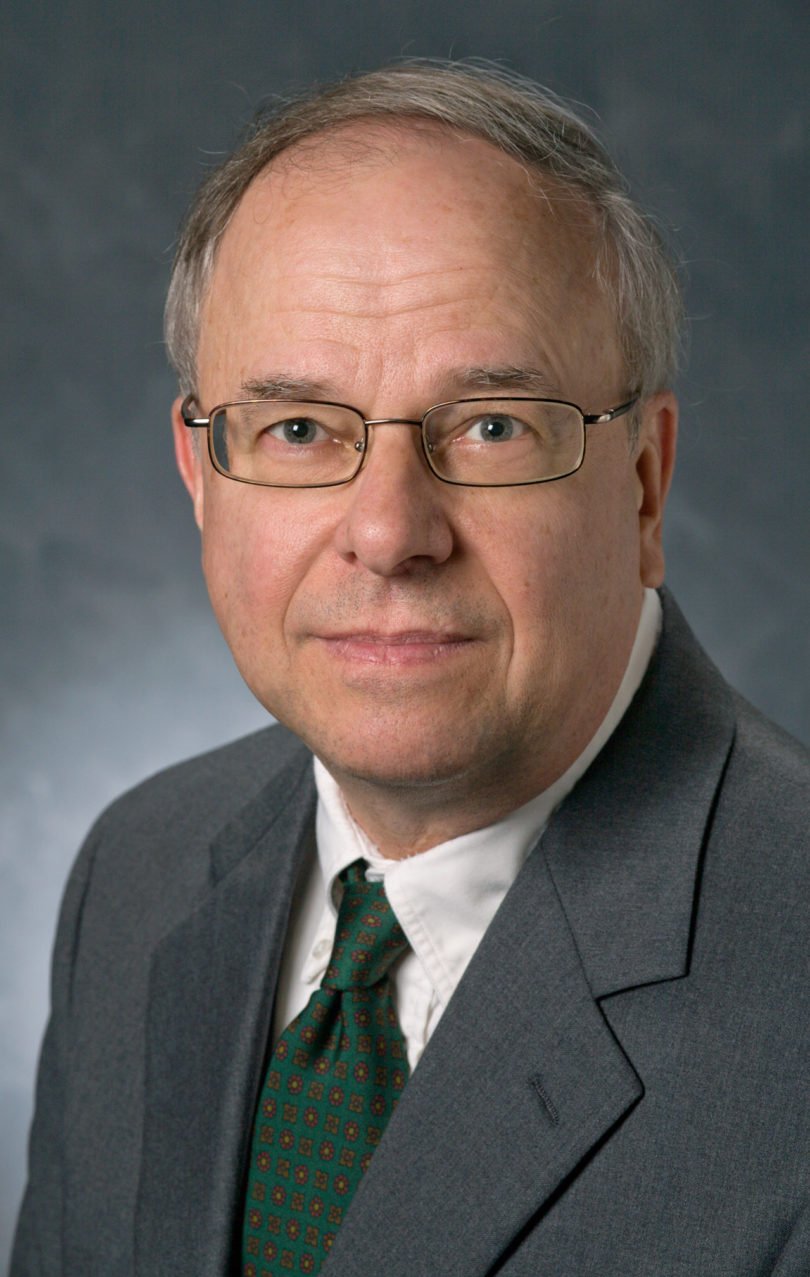The lecture hall is quiet as a group of 300 high school students, parents and guidance counselors, visiting the College of Veterinary Medicine for the annual Vet School for a Day program, listens intently to what Paul Frank has to say. Expecting the usual spiel of information about what it’s like to be a veterinarian, the room emits a collective gasp when Frank flashes the next PowerPoint screen: a radiographic image of two light bulbs in a snake’s stomach.
“Clearly the boa thought she was eating chicken eggs,” he said.
The crowd erupts into laughter.
Frank is not only good at engaging others in his profession, but he’s also highly skilled at seeing through the heart of an animal’s medical issues in the college’s teaching hospital. Of course, he has a little help from his radiology equipment.
Now in his eighth year at the hospital—he completed his three-year residency at UGA—Frank loves being involved in the diagnostics of medical issues.
“I spent four years in small animal and mixed animal practices in Texas and Colorado,” he said, “and I realized that what I loved most about veterinary medicine was not the routine care veterinarians handle on a daily basis, but rather figuring out what is wrong with a pet and dealing with the diagnosis.”
Frank’s interest in solving medical problems coupled with his affinity for computers and technology is what attracted him to radiology.
“While working in Colorado, I shadowed a radiologist conducting ultrasounds at private clinics,” he said. “It was then that I realized radiology was what I wanted to do.”
After five years on the faculty, he’s seen it all.
“From porcupines to horses to fish to geckos, we take whatever comes to us,” Frank said. “I like the fact that no two cases are the same. Even though the species are different, you can apply the principles of radiology to any animal.”
Relying upon the expertise of the specialists within the hospital, Frank enjoys collaborating with his colleagues to find solutions to problems.
“It’s a team effort. I love the fact that I’m surrounded by incredibly bright and talented professionals,” he said. “I could have thrived in another veterinary environment, like in a primary care hospital, but being surrounded by specialists helps me be a better veterinarian.”
Given his natural interest in the latest technology, Frank is excited about the new digital imaging system his department is implementing this fall at the teaching hospital.
“It’s the same type of system that human hospitals use. Instead of making a traditional film X-ray, you can capture an image digitally, and it goes straight to the computer,” Frank said. “It will make teaching and research much easier for the faculty by making images more easily accessible, and it will improve the efficiency of the hospital by making the process automatic.”
But what Frank enjoys more than anything is working with veterinary students and radiology residents.
“The most fun part of my day is reading film with the residents,” he said. “They are technologically savvy and thirsty for knowledge and love figuring out the solutions to medical issues as much as I do.”








